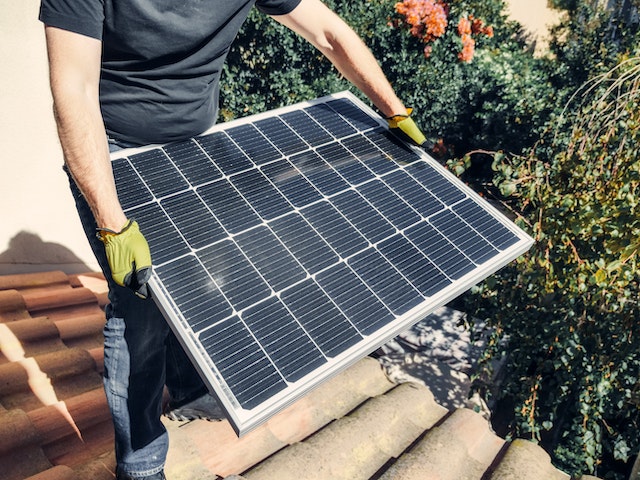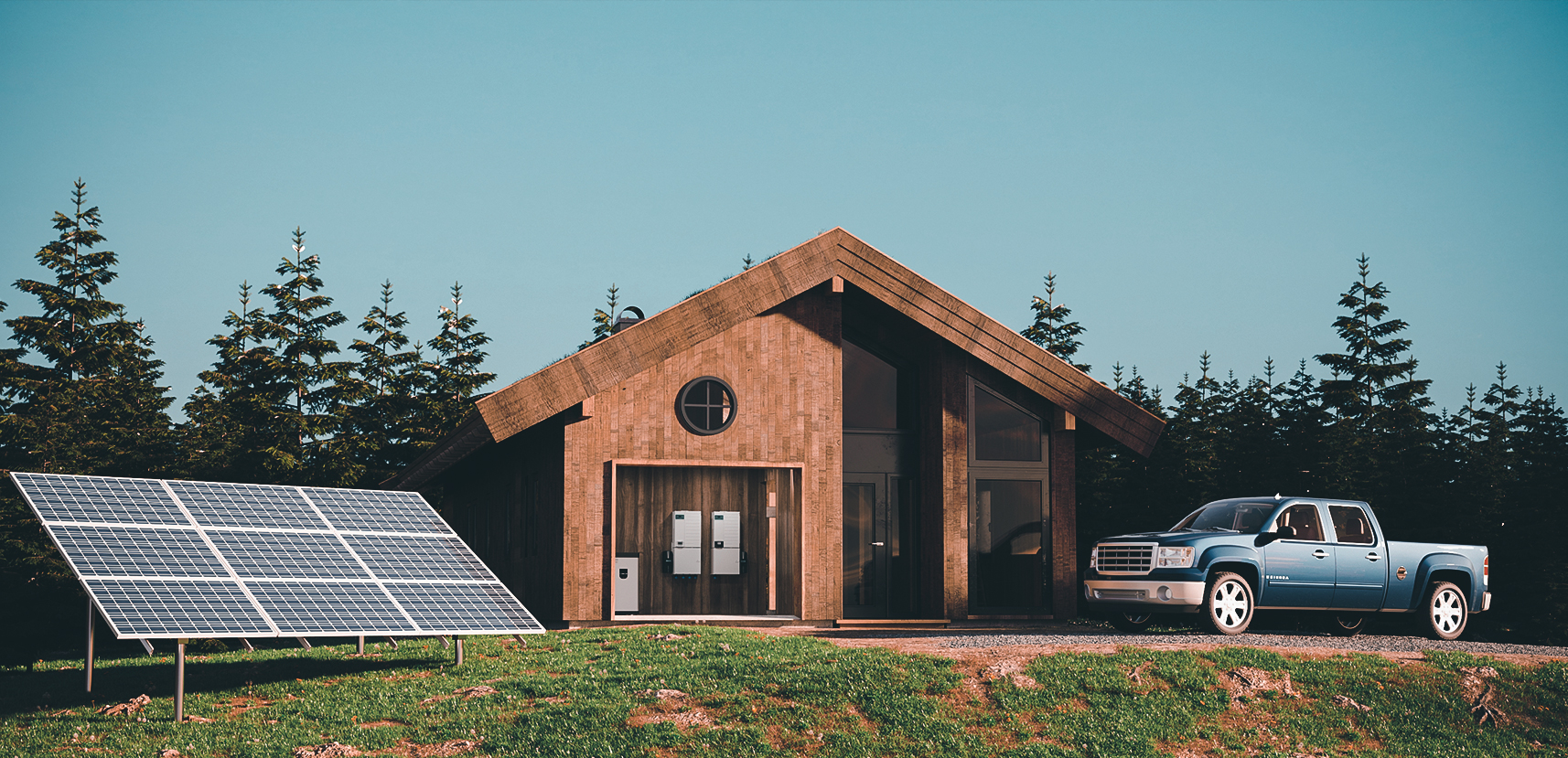Lower Energy Bills
The move to solar power in Canada is largely because of potential for massive savings felt by households, Households that use solar power immediately notice a reduction in their monthly electricity bills. Savings vary between 10% and 30%, depending on a several factors, most notably the size of your installation and energy consumption in your home. For example, a common Canadian home that's consuming about 11,000 kWh per year could see savings of between $1k-$1.2K/year with the system generating ~75% of their electricity needs.Effects of Solar Power on Expensive Electricity Regions
This is even more true in provinces like Ontario, with relatively high electricity rates (12.48 cents per kWh on average). People living in these areas have a greater potential for savings, making the costs of solar technology even more favourable. Not only do these answers seem to cost less on your monthly bill, but they also help you avoid future rate hikes in an uncertain energy landscape.Net Metering Vs.Energy Credits
Net metering policies, which most provinces in Canada have on offer that makes those solar panel savings even sweeter. These programs pay homeowners for feeding their extra solar electricity into the grid, and credit it against whatever they consume at night. For example, a solar-clever house with an excess of power compared to that required exports so as not only the electricity meter returns back and will be having less billing costs in future. Occasionally, the credits can cancel out low production months and eliminate electricity costs all together to increase savings even more.Increased Home Value
Solar panels add incredible value to homes in Canada making these properties highly desirable from a real estate perspective. A study says the installation of solar can increase home values by 4. For example, a $500,000 home may add around $20,500 in market value for adding solar panels.Visit Energy-Efficient Homes
Today, buyers care about energy efficiency more than ever before and any home that has solar panels installed will serve this demand. In markets where environmental consciousness and electricity rates (particularly in regions like British Columbia or Ontario) are already high, homes equipped with solar panels often enjoy a price premium. The trend in real estate is that these homes sell at premium prices as well as faster compared to their non-solar neighbors. This is driven by increasing consumers' emphasis on sustainability and foresight in utility cost management.Premium Pricing in the Real Estate Sector
Solar homes get a big premium For example, an expansive study in the U.S. show homeowners who had solar panel installations paid about $15k more money for a home with same size of those have no panels installed! Canada could see even higher returns from solar power installation, particularly where electricity prices are very high in some provinces when modelled largelyr on similar market dynamics. The incorporation of solar technology also pays huge dividends by lessening monthly utility bills and increases home value with a real-world premium, while providing an absolute return on investment.Not Just Money From the Sale Price
But beyond that higher sale price, solar panels cut annual electric bills dramatically-a fact Realtors everywhere are just starting to as a compelling selling point. Canadians can save $1,000 to $1,200 per year on their electric bills with rooftop solar power for the average household. This cut in utility bills can be a significant selling point for home buyers who want homes that will help them spend less over time. 5 What's more, there are proffers made by a few insurers who offer lower premiums to such homes considering the long-term value and sustainability of solar panels; thus, encouraging buyers even further.Reduced Carbon Footprint
The environmental benefits of doing so are huge - not only would going solar in Canada take a household's carbon emissions to essentially zero, but it is an important piece in the puzzle for Canada reaching its wider sustainable development and conservation goals. Relying on solar power can reduce dependence on carbon-heavy energy sources, like coal or natural gas.Households Carbon Emissions Reductions
By installing them in their residential property, people can ensure that an average of 1-3 tons per year carbon dioxide (CO2) emissions is not released. Let's compare that now to a large home solar system in Canada, say 7.5 kW with an annual CO2 offset of around 2.8 tonnes (or less for waven only). Savings based on national average savings and typical household electricity consumption.National carbon-released impact
At the national scale in Canada, if 10% of Canadian homes had solar systems installed it would eliminate nearly 3-million tons of carbon from being emitted each year. As Canada emitted 730 million tons of CO2 in 2019, the policy that targets CCS and more directly is a big step on their national commitment to cut greenhouse gases under Paris Agreement. Each solar panel is essential for advancing to these national and global sustainability targets.Enhancing Local Air Quality
Transitioning to solar energy similarly fights harmful environmental pollution here at home including dirty air. Solar power also curbs the demand for electricity, thus helping in reducing the emission of pollutants like sulfur dioxide and particulate matter - two major components behind smog buildup and health problems. If fully adopted in the most solar-heavy areas, smog days could be reduced up to 30% for major cities. This improves not just air quality in communities, but also brings benefits to public health by decreasing associated illnesses due to poor air quality like asthma and bronchitis.Energy Independence
NOV 22, 2019Adopting solar power in this manner offers Canadians an improved degree of energy independence and freedom from the national grid whilst providing a buffer against environmental interruptions to the electrical supply or fluctuations in pricing.
Less Reliance on Grid Electricity
Residential solar panel installations directly use sunlight to make homeowners electricity. The ability to do so is important in power outages or as a back-up system for when the grid connections are not that reliable, especially in rural areas. For example, remote areas such as regions in British Columbia or Northwest Territories can generate their own energy units and do not require long-distance electricity transmission (causing power loss). An average Canadian household uses about 6,000 kWh of electricity per year - This is the equivalent to a solar panel system with an output of roughly between 5-7 kW (i. e., generating around ~6000 -7000kWh/year).
Manageable Energy Costs
Turning homes into power plants, houses are not only producing all of their electricity but rays the grid lock in rates - a critical shield against fossil fuel price volatility. The report stated that electricity rates in Canada have increased at an average annual rate of 1.7 per cent this decade. Solar homeowners sidestep these increases (which stand to change even more if fossil fuel markets and resulting government policies see greater upheaval). Ontario residents, for instance have electricity rates of 12.48 cents per kWh; creating their own energy will save them hundreds yearly. A solar system can save a household $20,000 to $30,000 in electricity costs over 20 years depending on the size and local energy prices.
Enhancing Energy Security
In other words, solar power helps out energy security for the country by drawing less electricity overall from the baseline grid (especially during peak demand times). This distributed energy production capacity can act as a safeguard mechanism in case of extreme weather event-led or technical grid enabled load shedding cascading into larger power outages (which did happen after the most recent coal generation collapse) and serve to create added redundancy. Solar energy also proved its resilience when Ontario faced several heat waves in summer 2018 where solar power supplied extra generation to the grid, alleviating pressure during high demand hours. The Solar PV capacity registered in the province, which stood around 2.5 GW during that time largely released pressure on grid operations.
Government Incentives
The Canadian government also provides a number of tax breaks to fulfill the consumer subsidies for adoption of solar moving consumers towards cleaner energy at home.Federal Incentives
Solar enjoys significant state backing in Canada, the country which initiated Ottawa's Canada Greener Homes Grant program. They will offer up to $5,000 for homeowners who go solar on their own rooftops Aimed to help people cover costs related with installing solar panels, as well as audits and other home upgrades that improve energy efficiency. On top of this, the ACCA offered by the federal government allows businesses to depreciate their solar investment 100% in year one which can have a major impact on tax liabilities and make large scale solar projects more viable.Provincial Incentives
- Ontario - Homeowners can take advantage of the Net Metering program which allows you to export excess electricity back into the grid in exchange for credits on your utility bills. They can reduce annual electricity expenses as much as 50 percent, depending upon the volume of solar energy generated. For instance, the average home with an annual $1.2K electricity bill could save up to $600 per year from net metering alone.
- Alberta: The installation of a residential system can make homeowners eligible for rebates valued at up to $0.75 per watt or 30% of costs, while commercial roof solar installations come with higher limit depending on number and project capability - Maximum rebate cannot exceed CAD$10k under the Albertan program. This would mean an upfront cost of $11,250 after a rebate at 25%, which could be awarded on a typical $15k + system. For example, for a system of about 5 kW this code means The government pays you back up to$3,750 -%.
- BC Hydro — While British Columbia has a program similar to Ontario for net-metered solar systems, you might want to consider the province's Community Energy Leadership Program if you're looking at rural or remote microgrids as it funds up 40% of project costs. If, for example, the community has a project in an under-developed area that will cost $100,000 to do completely remotely and all of it is completed by hAPI members/volunteers (paid through Oryx Tokens based on work/experience level) then only about 40% of this would be covered.
Local/Municipal Incentives
This is in addition to various federal and provincial programs, which many municipalities also put their own resources into. For example, the City of Edmonton gives you a $0.40 per watt rebate for home solar that covers up to $4,000 in rebates That would net a $2,800 rebate for the 7 kW system (whose cost is around $21,000) bringing its price down to about :$18,200.How to Apply for Incentives:
For a homeowner to take advantage of these incentives, there is a significant process they usually have to follow:- Energy Assessment- A number of the programs require an energy assessment or audit to qualify, as well as types of potential savings. This evaluation typically runs about $300, but government programs often subsidize the cost.
- Application Submission: Homeowners submit specific applications that contain quotes from approved solar installers as well as plans for the solar project. Specifically with regards to the example we gave previously, a 10kW system totaling $30,000 would show detailed labor breakdowns as well equipment and installation costs.
- Confirm with your client: You need to get an approval from the client first on it, then Only installation can be done. Usually the process takes 3 -6 months from LP application for installation of racking between 1 to2 weeks.
- Claim Your Rebate: Homeowners install a device and then submit proof of installation to claim their rebate. These rebates can offset a large part of the costs associated with deployment, in one scenario resulting in payback for many energy efficiency investments being reduced to as little as 1-2 years. Using assistance of $5,000 from the federal government and a rebate worth to $3,750 on provincial level could cut down total cost on system that costs up to 30k just for around only 21.25K



